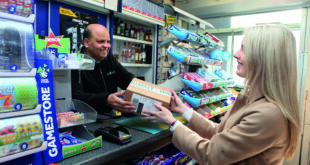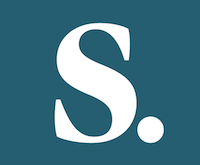Items on display from the communities of the Plains are photographed at the Royal Ontario Museums in the Daphne Cockwell Gallery dedicated to First Peoples art and culture, in Toronto on July, 2019.Tijana Martin/The Globe and Mail
The Royal Ontario Museum has temporarily closed its First Nations gallery after conversations with Indigenous professionals. Following the Oct. 8 opening of an exhibition of new work by the Cree artist Kent Monkman, the ROM decided to “pause” the Daphne Cockwell Gallery dedicated to First Peoples art and culture and begin consultations to change its exhibits.
“We came to feel that at a moment when we were welcoming Indigenous voices in a fuller way, we should be looking at all of the ways we present Indigenous material,” said ROM director Josh Basseches, noting that dioramas in the gallery featuring costumed mannequins no longer seemed appropriate. “We ended up feeling like we wanted to move immediately on this.”
He added that normally the museum would plan a new exhibit and raise the money to pay for it before closing an old one, but in this instance, it decided to do the work incrementally and reopen as soon as possible. The gallery will be closed for a few months, not years, he said.
A sign on the gallery, which closed Oct. 19, reads: “We are pausing this gallery and gathering voices to more deeply reflect contemporary Indigenous perspectives and further the work of truth and reconciliation. Updates to the gallery will be ongoing and created in close collaboration with members of Indigenous communities. We look forward to welcoming you back soon.”
Basseches said the decision was a direct result of the ROM’s collaboration with Monkman, who created a suite of paintings inspired by the museum’s collection of fossils, dinosaurs and moccasins, and with the Indigenous educators and advisers who worked on that show.
Monkman did not respond to requests for comment. Basseches said there had not been direct complaints about the Cockwell gallery, but rather questions about the diorama and requests to do smudging ceremonies that the space could not currently accommodate.
The gallery is on the museum’s first floor just inside the Queen’s Park entrance and was first opened in 2005, featuring mainly historic material such as canoes, totems and clothing. It was revamped over the years with a major change in 2018 after consultations with Indigenous representatives.
Paintings by Paul Kane, the 19th-century Irish-Canadian artist known for romanticized depictions of First Nations people, were removed, while material about residential schools and work by contemporary Indigenous artists such as Jane Ash Poitras were added. Ironic touches such as a cellphone and cordless drill were added to historical figures in the diorama to stress that Indigenous culture is also contemporary.
Today, however, that may not be enough.
“Having consistent content that says Indigenous people are still here is important, they remain vibrant living cultures,” said Tim Johnson, a Mohawk museum professional who has consulted on some ROM programming and was formerly associate programming director at the Smithsonian Institution’s National Museum of the American Indian in Washington, D.C. “You don’t want to treat that information in a cavalier way but bring in a solid understanding of who Indigenous people are today.”
He said dioramas are generally considered out of date.
One pressing issue for many Canadian museums is finding Indigenous curators to work with Indigenous material. The ROM’s staff includes several educators but no curators of Indigenous ancestry, and the museum is looking for Indigenous candidates to fill two curatorial positions in North American archeology and Indigenous culture.
Tanya Talaga: Through his art, Kent Monkman shows us how to confront Indigenous erasure
Johnson said that, while specialized cultural knowledge was sometimes needed for certain objects, non-Indigenous curators could also program Indigenous content as long as there was collaboration. On the other hand, he said, galleries should not simply be handed over to communities without involving museums professionals.
“I see it as a partnership,” he said.
The closing of the Indigenous gallery leaves the ROM in the odd position of having no permanent galleries dedicated to material from Canada, since the Sigmund Samuel Gallery of Canada closed this year to make way for the temporary exhibition space where the Harry-Potter-themed Fantastic Beasts show is now open. Instead, the ROM is relying on rotating exhibits to provide Canadian content, such as the design show Canadian Modern, which opens next month. Also, two-thirds of the fossils in the new Dawn of Life gallery were collected in Canada with specimens from the Burgess Shale in British Columbia and Joggins Fossil Cliffs in Nova Scotia.
Basseches said a full redo of the Cockwell gallery would cost between $10-million and $15-million, and would fit into a master plan of the galleries on which the museum is working.
Meanwhile, the ROM continues to work on repatriating objects to Indigenous communities and was recently involved in the purchase of a 186-year-old treaty pipe from a U.S. collector so that it could be returned to the Ojibwe Cultural Foundation on Manitoulin Island.
Source link


